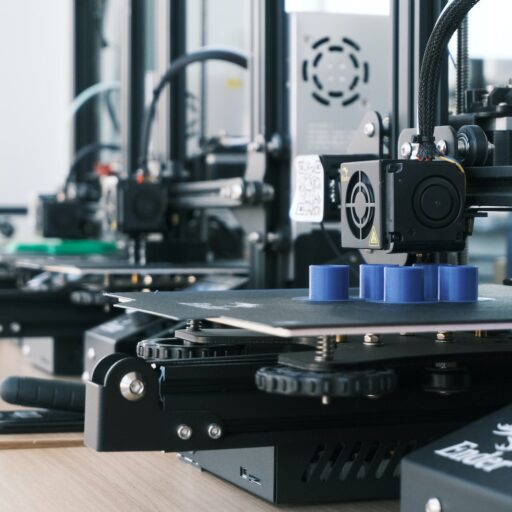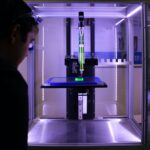Support our educational content for free when you purchase through links on our site. Learn more
How Much Does a Metal 3D Printer Cost in 2023?
Are you curious about the cost of a metal 3D printer? Look no further! At Best 3D Printer™, we’re here to provide you with all the information you need. In this article, we’ll explore the various factors that influence the price of a metal 3D printer, discuss the pros and cons of owning one, and answer some frequently asked questions. So, let’s dive in and discover the world of metal 3D printers!
Table of Contents
- Quick Answer
- Quick Tips and Facts
- Background
- 1. Types of Metal 3D Printers
- 2. Factors Affecting the Cost
- 3. Pros and Cons of Metal 3D Printers
- 4. Metal 3D Printing Applications
- 5. Metal 3D Printing Services
- FAQ
- Conclusion
- Recommended Links
- Reference Links
Quick Answer
The cost of a metal 3D printer can vary significantly depending on several factors such as the type of printer, build volume, printing technology, and additional features. On average, a desktop metal 3D printer can range from $10,000 to $100,000, while industrial-grade metal 3D printers can cost anywhere from $100,000 to several million dollars. Keep in mind that these prices are approximate and can vary based on the specific requirements of your project.
CHECK PRICE on:
Quick Tips and Facts
- Metal 3D printers use various technologies such as selective laser melting (SLM), electron beam melting (EBM), and binder jetting to create metal parts layer by layer.
- The cost of metal 3D printers has been decreasing over the years, making them more accessible to a wider range of users.
- Industrial-grade metal 3D printers are typically larger and more expensive than desktop models.
- In addition to the initial cost of the printer, you should also consider the ongoing expenses such as materials, maintenance, and electricity.
- Metal 3D printing offers numerous advantages such as design freedom, complex geometries, and reduced material waste.
Background
Metal 3D printing, also known as additive manufacturing, has revolutionized the manufacturing industry by enabling the production of complex metal parts with unprecedented precision. Traditional manufacturing methods often involve subtractive processes, where material is removed from a solid block to create the desired shape. In contrast, metal 3D printing builds objects layer by layer, allowing for intricate designs and reducing material waste.
- Types of Metal 3D Printers
Metal 3D printers come in various types, each with its own advantages and limitations. Here are some common types of metal 3D printers:
- Selective Laser Melting (SLM): This technology uses a high-powered laser to selectively melt metal powder, fusing it together to create solid parts. SLM is known for its high accuracy and excellent surface finish.
- Electron Beam Melting (EBM): EBM utilizes an electron beam to melt metal powder, similar to SLM. However, EBM operates in a vacuum environment, which allows for the production of parts with improved mechanical properties.
- Binder Jetting: In binder jetting, a liquid binder is selectively deposited onto layers of metal powder, binding them together. This process is repeated until the entire part is formed. Binder jetting is known for its speed and cost-effectiveness.
- Factors Affecting the Cost
The cost of a metal 3D printer can vary based on several factors. Here are some key considerations:
- Build Volume: The size of the build volume, or the maximum dimensions of the parts that can be printed, can significantly impact the cost. Larger build volumes require more robust and expensive hardware.
- Printing Technology: Different printing technologies have varying levels of complexity and precision, which can affect the cost. For example, SLM and EBM printers tend to be more expensive than binder jetting printers.
- Materials: The type and quality of materials used in metal 3D printing can vary in cost. Some printers are compatible with a wide range of metals, while others are limited to specific alloys.
- Additional Features: Certain features, such as advanced software capabilities, automated powder handling systems, and in-situ monitoring, can increase the cost of a metal 3D printer.
- Pros and Cons of Metal 3D Printers
Metal 3D printers offer numerous advantages, but they also have some drawbacks. Let’s take a closer look at the pros and cons:
| Pros | Cons |
|---|---|
| ✅ Design Freedom: Metal 3D printing allows for the creation of complex geometries and intricate designs that are difficult or impossible to achieve with traditional manufacturing methods. | ❌ Cost: Metal 3D printers can be expensive, especially industrial-grade models. The initial investment, as well as ongoing expenses such as materials and maintenance, should be considered. |
| ✅ Reduced Material Waste: Metal 3D printing is an additive process, meaning that only the necessary amount of material is used, reducing waste and minimizing environmental impact. | ❌ Post-Processing: Metal 3D printed parts often require post-processing steps such as heat treatment, machining, or surface finishing to achieve the desired properties and aesthetics. |
| ✅ Lightweight and Strong Parts: Metal 3D printed parts can be lightweight and strong, thanks to the ability to optimize internal structures and reduce material usage. | ❌ Limited Material Selection: While the range of available metal materials for 3D printing is expanding, it is still more limited compared to traditional manufacturing methods. |
| ✅ Customization and Personalization: Metal 3D printing enables the production of customized parts tailored to specific requirements, allowing for personalization and mass customization. | ❌ Speed: Metal 3D printing can be a relatively slow process, especially for large and complex parts. Patience is required. |
- Metal 3D Printing Applications
Metal 3D printing has found applications in various industries, including aerospace, automotive, healthcare, and jewelry. Here are some examples:
- Aerospace: Metal 3D printing is used to create lightweight and complex components for aircraft and spacecraft, reducing weight and improving fuel efficiency.
- Automotive: Metal 3D printing enables the production of customized parts, such as engine components and lightweight structures, improving performance and reducing assembly time.
- Healthcare: Metal 3D printing is used in the medical field to create patient-specific implants, surgical instruments, and prosthetics, improving patient outcomes and reducing costs.
- Jewelry: Metal 3D printing allows jewelry designers to create intricate and unique pieces with high precision and fine details.
- Metal 3D Printing Services
If owning a metal 3D printer is not feasible for your needs, you can consider using metal 3D printing services. These services allow you to outsource your metal 3D printing projects to specialized companies that have the necessary equipment and expertise. By utilizing metal 3D printing services, you can access the benefits of metal 3D printing without the upfront investment and ongoing expenses.
FAQ

How much do a metal 3D printer cost?
The cost of a metal 3D printer can vary significantly depending on several factors such as the type of printer, build volume, printing technology, and additional features. On average, a desktop metal 3D printer can range from $10,000 to $100,000, while industrial-grade metal 3D printers can cost anywhere from $100,000 to several million dollars.
Read more about “How Much Does 3D Printer Plastic Cost in 2023?”
Are metal 3D printers worth it?
Metal 3D printers can be a worthwhile investment for businesses and individuals who require the ability to produce complex metal parts with high precision. However, it’s important to consider the specific needs and budget of your project before making a decision. Conduct thorough research, evaluate the potential benefits and drawbacks, and consider consulting with experts in the field.
Read more about “… Best 3D Printer: The Ultimate Guide to Choosing the Perfect 3D Printer”
Is there a 3D printer that uses metal?
Yes, there are several types of 3D printers that can print with metal. These printers utilize various technologies such as selective laser melting (SLM), electron beam melting (EBM), and binder jetting to create metal parts layer by layer.
Read more about “… What Do 3D Printers Use? A Comprehensive Guide”
Can you 3D print metal at home?
While it is technically possible to 3D print metal at home, it is not as common or accessible as plastic 3D printing. Metal 3D printing typically requires specialized equipment, such as high-powered lasers or electron beams, as well as controlled environments to ensure safety and quality. However, as technology advances and becomes more affordable, we may see more accessible metal 3D printing options for home users in the future.
Read more about “Industrial 3D Printer Price …”
Conclusion
In conclusion, the cost of a metal 3D printer can vary depending on several factors such as the type of printer, build volume, printing technology, and additional features. While metal 3D printers can be a significant investment, they offer numerous advantages such as design freedom, reduced material waste, and lightweight yet strong parts. It’s important to carefully consider your specific needs and budget before purchasing a metal 3D printer.
At Best 3D Printer™, we recommend conducting thorough research, exploring different options, and consulting with experts in the field to make an informed decision. Whether you choose to invest in a metal 3D printer or utilize metal 3D printing services, you can unlock the potential of this innovative technology and bring your ideas to life.
Recommended Links
- 3D Printer Reviews
- 3D Printer Brands
- 3D Printers for Small Businesses
- 3D Printers for Education
- How Much Does 3D Printer Plastic Cost in 2023?
CHECK PRICE on:



